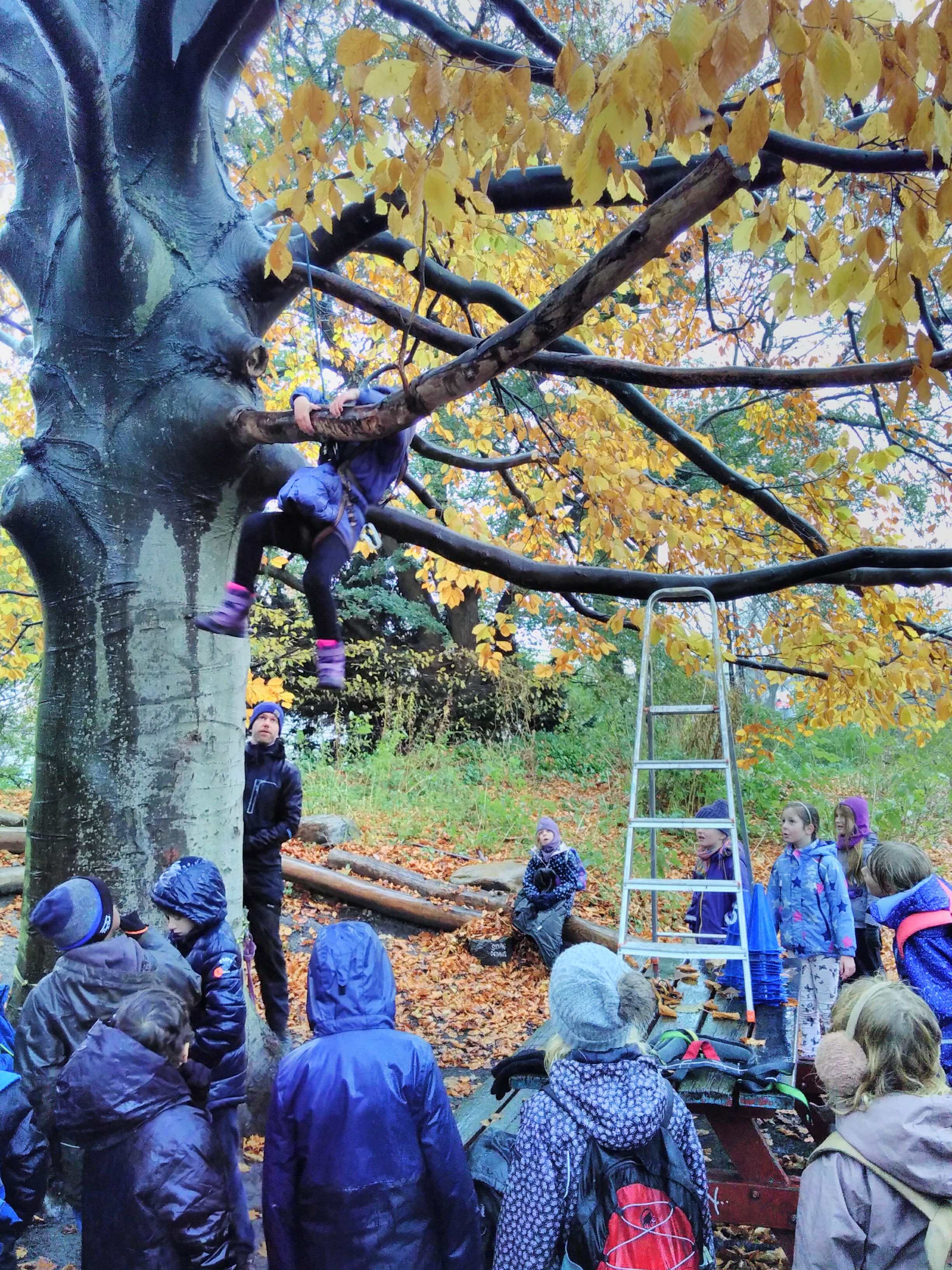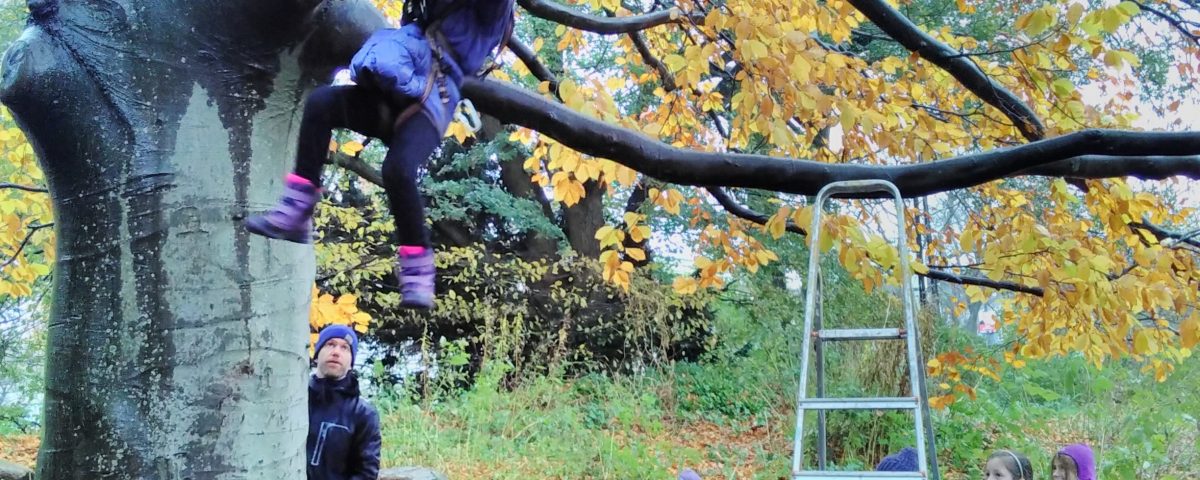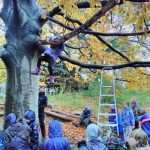Learning outside the classroom – the forest pedagogy of the 21th Century

A tree app to identify species
5. December 2017
13th European Forest Pedagogics Congress 2018
8. January 2018
Learning outside the classroom – the forest pedagogy of the 21th Century
Zürich, Switzerland, 6. December 2017
Author: Rolf Jucker, SILVIVA, Switzerland

S ILVIVA has launched a nationwide programme called “teaching outdoors” which aims to encourage schools and teachers to teach outdoors as often as they can and in all subjects, not necessarily but mainly in nature settings.
We had known from previous research and from many vivid examples in Scotland, Norway, Finland and even Switzerland that learning out in nature works and has numerous benefits. But because we are convinced that any intervention in the school system has to be evidence based and support the teachers as well as the pupils, we wanted to see first hand what the experiences of outdoor schooling are.
With this in mind the entire team of SILVIVA spent a week in Copenhagen, thanks to some generous funding by Stiftung Mercator Schweiz (https://www.stiftung-mercator.ch). We visited the Guldberg Skole in Copenhagen (https://guldbergskole.skoleporten.dk/sp) as well as the Karlebo School (https://www.facebook.com/KarleboSkole/) and the Skovskolen research institute (http://skovskolen.ku.dk/).
The experiences of seeing udeskole (outdoor school) practised on such a scale was truly impressive and yielded many insights about how the methods and approaches of forest pedagogy can be applied and used to generate highest quality learning for the pupils, within a perspective of education for sustainable development. Udeskole is in Denmark defined as regular teaching outside the school (ideally a full day, every week, for the entire year = 20% of school time). So what are the actual benefits that schools practising udeskole see in Denmark (backed up by years of experience and research by skovskolen)?
- Ever since Hattie (2008) showed in Visible Learning, we know for sure that successful social interaction between teachers and pupils is the basis for effective learning. Outdoor school stimulates a better social relationship not just between pupils and teachers but also among pupils themselves. The fact that they all share experiences in various contexts, social settings and learning environments together, that they also share a lot of informal time together (such as on the way to and from the forest), means that they build trust, loyalty and a deeper understanding of each other which enhances not just outdoor learning, but feeds back into a better class climate back indoors.
- Worldwide, it is well established by research that from the day pupils enter school till they leave it again, motivation drops continuously. Skovskolen research was able to show that udeskole does not increase motivation, but it does halt the drop in motivation – which is an immense achievement already.
- Learning outside the classroom also fosters in-depth, real-life, hands-on learning in various different, stimulating, emotionally engaging learning environments – something we know from brain research to enhance memory, long-term learning and understanding of complexity. It enables meaningful learning, authenticity and the experience of self-efficacy. Learning in other, new environments also pushes pupils outside their comfort zones which is a key factor in learning.
- One of the most surprising but also logical impacts of outdoor learning is that it has a clear positive effect on language competencies. Because pupils are not in a familiar, already ‘named’ environment (such as the classroom), they are forced to talk, to ask, to name new things, to describe stuff that happens, to learn new vocabulary to communicate effectively. It has also been shown that, while teachers talk on average 80% of the time when in the classroom, this ratio is reversed outside: it is pupils talking 80%.
- And, last but not least, outside pupils and teachers are always on the move, particularly boys. This added movement has many obvious health benefits.
Now, the obvious question is: what are the factors that enable outdoor learning? What helps to make it happen? Again, the experiences in Denmark can support us in other countries to promote outdoor learning:
- The support by headteachers and parents is crucial, particularly since very often financial support is also necessary. So it is very important to have well-documented, evidence based arguments to show the benefits of learning out in nature.
- Peer-to-peer learning systems within schools and between schools seem to be the best way to train up competences amongst teachers to be confident with outdoor teaching. It enables experienced outdoor teachers to train newcomers ‘on the job’. An additional support can be generated by regional and national exchange events between schools.
- Trained forest pedagogues or outdoor teachers can act as consultants and coaches, helping schools on the way to practice more outdoor teaching.
- Teaching materials and websites with ready-to-use examples of how to teach any subject outdoors is very welcomed by teachers.
- Integrating learning out in nature into the schools’ programmes of reflecting on quality education helps to push the entire school towards a more cooperative approach, where team teaching, mutual learning amongst teachers and a shared understanding of pedagogical aims becomes possible.
- Integrating learning outdoors into pre- and in-service teacher training is fundamental to long-term success.
What is the upshot of all this for forest pedagogy? For SILVIVA, it suddenly became obvious to us that the methods and approaches used in forest pedagogy are a fundamental and crucial part of ensuring that Goal 4 of the United Nations’ Sustainable Development Goals, namely to “ensure inclusive and quality education for all and promote lifelong learning” is reached (http://www.un.org/sustainabledevelopment/education/). Learning outside the classroom, in nature, in businesses, in museums or sports clubs, in other words in real-life complex realities is the best option we have to make teachers and pupils fit for the challenges of the 21st century. Or, put differently: Learning in and with nature is a very effective and powerful part of education for sustainable development. And, by the way, this is not just a SILVIVA fad: in the recently published “Warning to Humanity: A Second Notice”, signed by more than 15’000 scientists worldwide, people everywhere are urged to take effective measures to save the biosphere as our life-support system on which we all depend. As one of 12 effective measures they advocate „(i) increasing outdoor nature education for children, as well as the overall engagement of society in the appreciation of nature“ (https://academic.oup.com/bioscience/advance-article/doi/10.1093/biosci/bix125/4605229).



